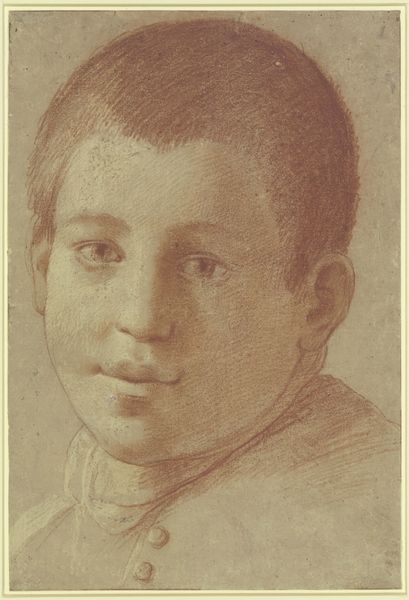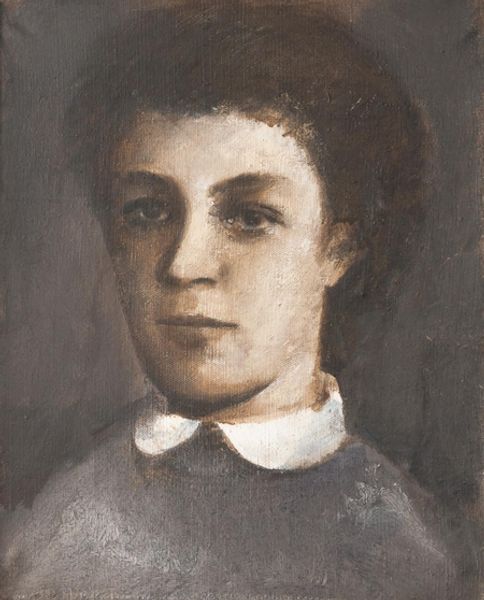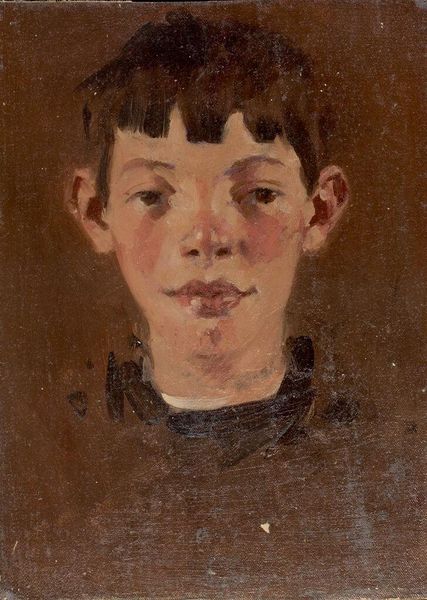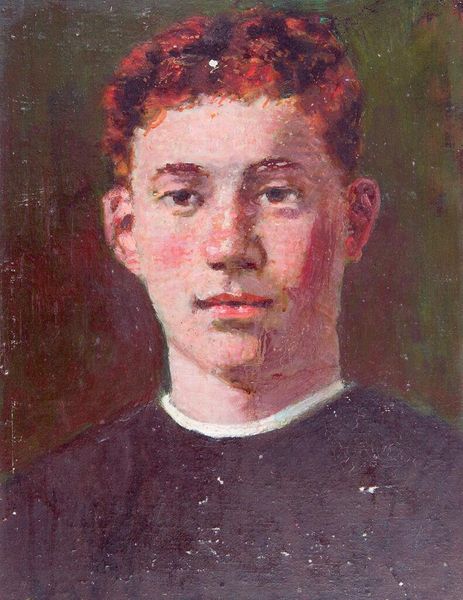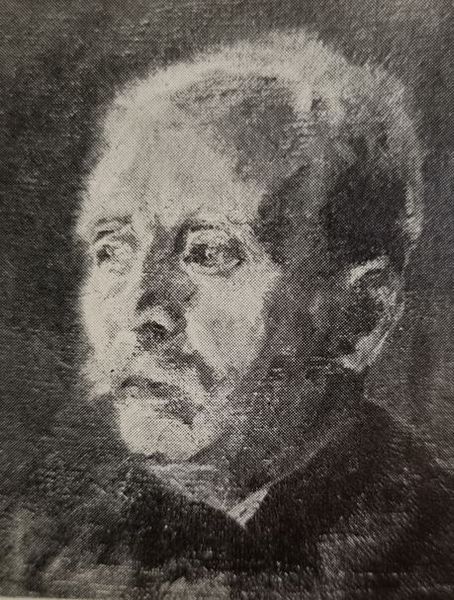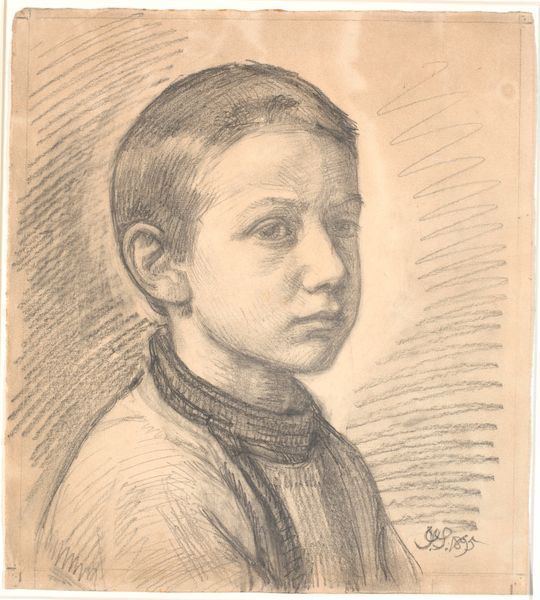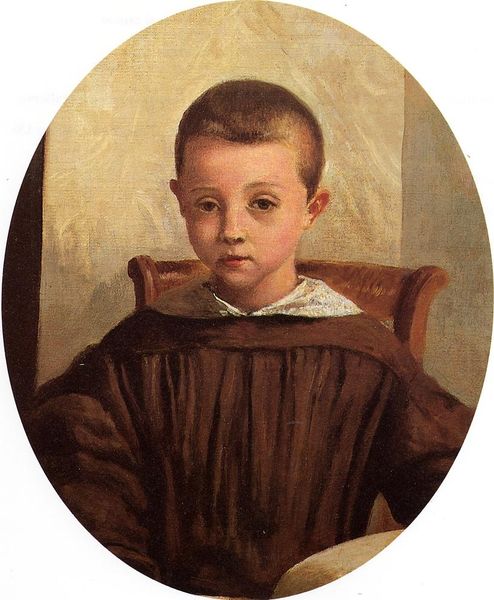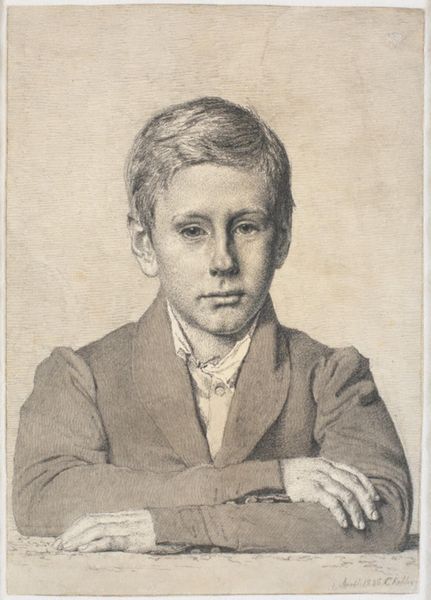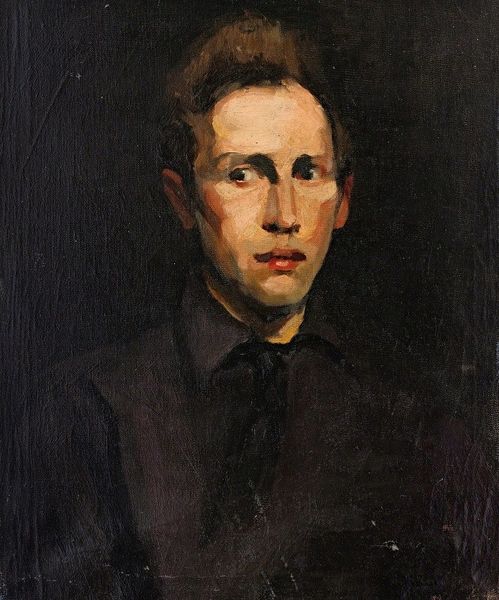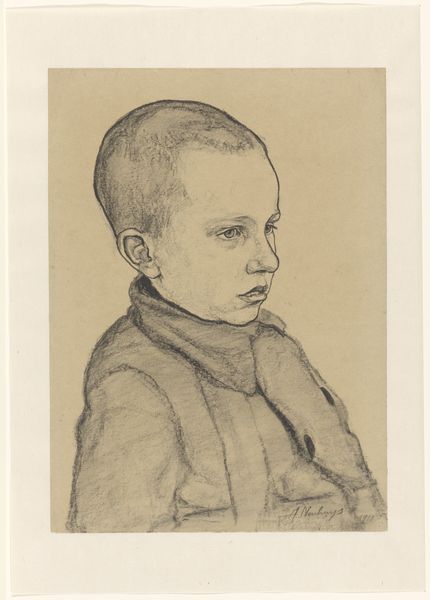
Copyright: Public domain
Editor: This is Ilya Repin's "Portrait of A.S. Matveev," created in 1881 using watercolor. There’s a certain melancholy to the sitter, wouldn’t you say? What can you tell me about this piece? Curator: Beyond the apparent melancholy, I see a representation deeply embedded in the sociopolitical currents of late 19th-century Russia. Consider the cultural upheaval; what narratives about youth and potential power dynamics might Repin be engaging with here, especially given his commitment to realism and depicting social realities? Editor: That's a perspective I hadn’t considered. I was mostly focused on the artistic technique. It almost feels unfinished in parts. Curator: Precisely! And what does that "unfinished" quality suggest? Perhaps a commentary on the subject's unfulfilled potential, reflecting broader anxieties about the future of Russia and its youth? Realism, in Repin's hands, became a tool to critique societal structures. Editor: So, it's less about capturing a likeness and more about a broader statement about society? Curator: It's both! Think about who was being represented at that time and how artists used portraiture to negotiate complex social messages. Editor: That helps me see the painting in a new way, moving beyond just the surface and into its deeper social implications. Curator: Exactly. By analyzing the formal qualities within the appropriate cultural and historical context, the artwork sparks profound conversations about identity, power, and the socio-political milieu. Editor: This has given me a lot to think about. I really appreciate you sharing that contextual lens.
Comments
No comments
Be the first to comment and join the conversation on the ultimate creative platform.
